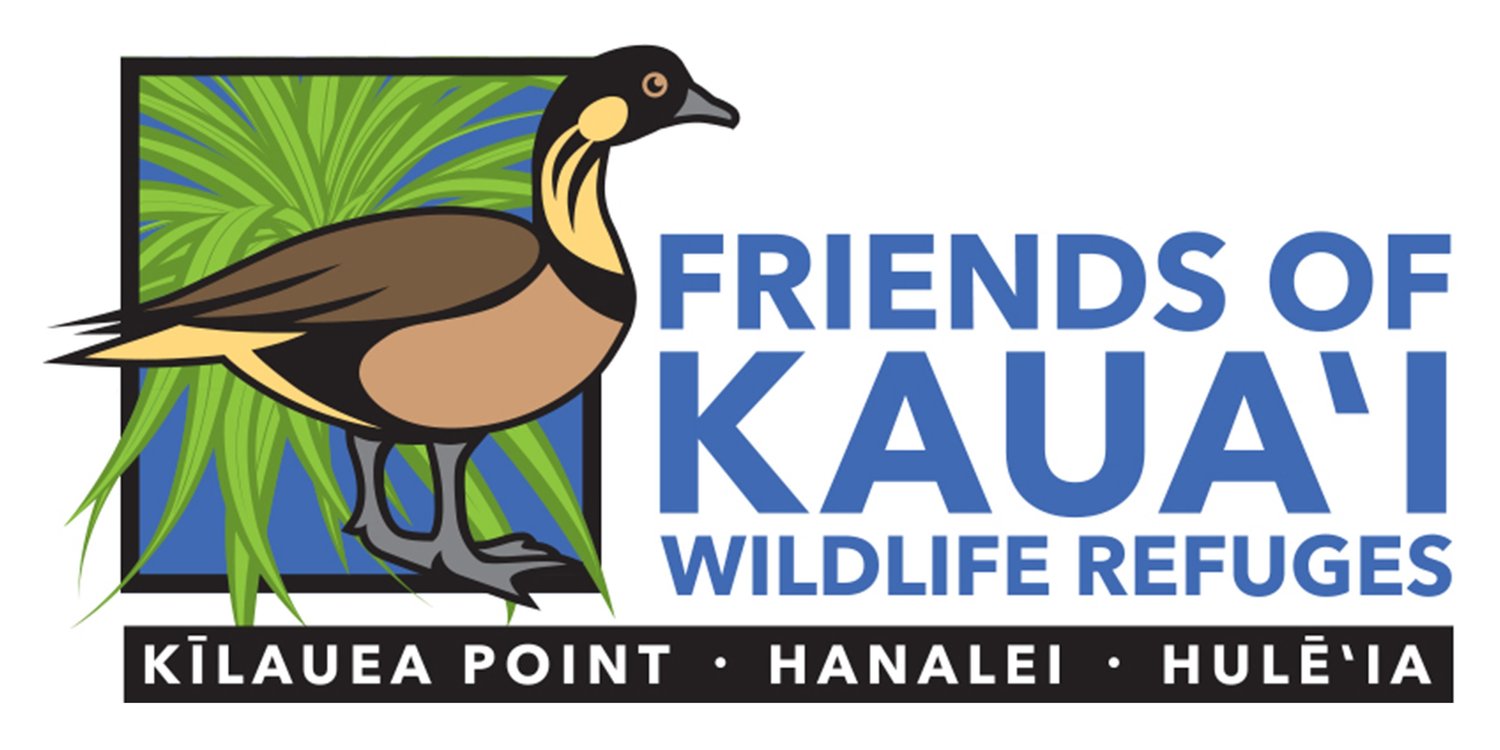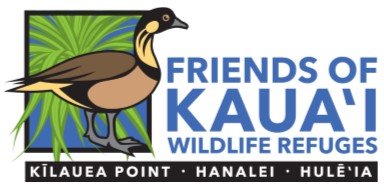Wildlife Spotlight: koaʻe ʻula
Koaʻe ʻula, or red-tailed tropicbirds, migrate to Kauaʻi annually and are generally seen around Kīlauea Point NWR from February through October, with peak nesting from March through August. Now is a great time of year to enjoy views of these delightful birds! They are mating, squawking, circling about the Refuge and delighting visitors with their airborne agility as they perform complex aerial courtship displays. Their acrobatics even consist of flying backwards, vertical displays and circles, and provide great fodder for birders and photographers.
In ʻŌlelo Hawaiʻi, koa‘e refers to tropicbirds and ‘ula means red – referencing their characteristic red tail feather. Mature koaʻe ʻula also feature mostly white plumage with a conspicuous black stripe from the gape, curving towards and passing through the eye.
Koaʻe ʻula are pelagic birds, meaning they spend the majority of their life on the open ocean and only venture back to land to breed. They are powerful fliers with exceptionally long, thin wings and can remain in flight for days or weeks, resting mid-air, while staying hundreds to thousands of miles offshore. Like other seabirds, they also have a special salt gland that helps them extract excess salt from their body. This allows them to drink seawater and ingest water from fish without accumulating toxic levels of salt in their bloodstream.
Also, like other seabirds, the females lay a single egg. However, unlike most other seabirds, they are able to “relay” and produce an additional egg if the first one is lost or infertile. Their incubation period varies from 39-51 days and is supported by both parents, with average incubation shifts ranging from 8-9 days in length.
Koaʻe ʻula nest on the ground under bushes, rocks and outcroppings, leaving them vulnerable to predation and attacks from feral and free roaming cats, dogs, rats and pigs. Koaʻe ʻula nesting sites are located across Kīlauea Point NWR and around Nihokū. Thankfully, most place their nests within the safety of the predator exclusion fence that protects our wildlife. However, seabirds are generally very loyal to their nesting sites and some continue to nest on the grounds of the Refuge but outside of the safety of the fence. Please, help keep these birds safe by keeping dogs on leash while enjoying time at Kāhili Beach Park. Sadly, we recently lost 14 birds due to an attack from a dog off leash.
During the first few weeks after hatching, chicks are attended to and fed by one of its parents in shifts similar to those during incubation. Feeding takes place approximately every 17 hours, as the adults regurgitate a nutritious slurry of seafood.
The chick-rearing period can range from 77 to 123 days and the chicks will reach adult weight in just 6 weeks. Then, around 11 weeks, wing exercising begins and in 12-13 weeks, fledging occurs. As the chicks fledge, they will feature a dark gray bill, along with white and gray plumage. However, when they return to the Refuge to breed, at around age 4, they will have donned their distinctive white, black and red adult features.
Photo: Koaʻe ʻula at Kīlauea Point NWR, Credit: Hob Osterlund.


